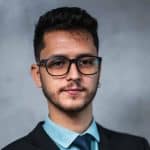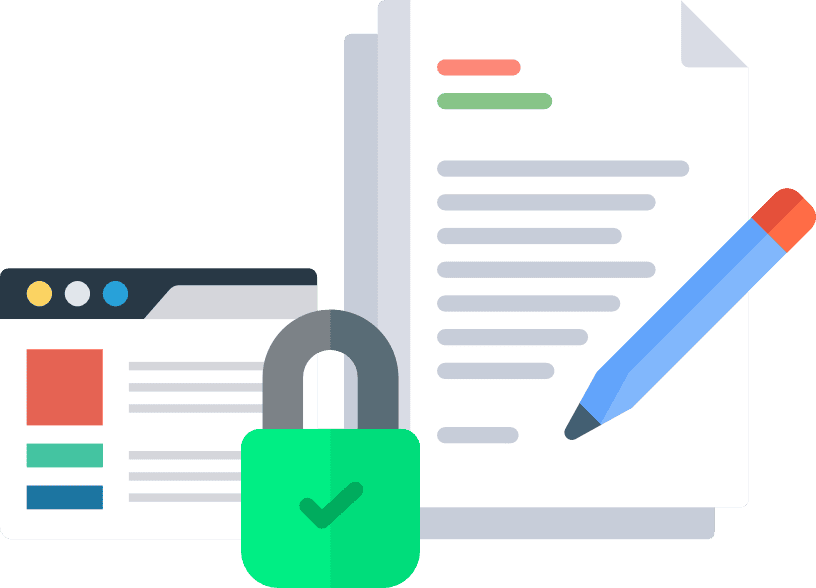If you pay attention, you’ll notice that most, if not all, of your favorite websites, have terms and conditions.
When launching an online business, it can be hard to understand why you need to spend time and effort creating terms for your users. Also, you might have no clue what to write and how to write it.
The good news? You don’t need to be a legal expert to create these terms.
In this article, you’ll find a terms and conditions template for websites that you may download for free and customize to fit your needs.
I’ll also show you some examples of terms and conditions and important details you should keep in mind when personalizing the template to avoid common mistakes.
- Creating terms and conditions for your website is essential for setting the “house” rules, legal protection, managing user conduct, and much more.
- Customizing terms and conditions according to your specific needs and requirements helps address potential risks and liabilities.
- Regularly updating terms and conditions in accordance with your business and legal changes will ensure continuous compliance, and maintain transparency and trust with your users.
Table of Contents
PRO TIP: Take the hassle of writing your own terms and conditions away with our terms and conditions generator trusted by over 200,000 businesses. It’ll save you hours of work and possible costly legal mistakes.
Sample Terms and Conditions Template
When it comes to what you should include in your terms and conditions, there are what could be considered standard clauses. This means that you’ll find them in pretty much any standard terms and conditions agreement.
To give you a head start, we put together this sample terms and conditions template for websites. Keep in mind though that you should always consider the specifics and requirements of your own business to make sure you cover all the bases.
Feel free to download it in your preferred format and personalize it to your needs, taking into consideration the services or products that you offer and the risks and liabilities that come with those.

A Better Way to Create Terms and Conditions
While you may choose to use a terms and conditions template or even attempt to write terms and conditions for your website by yourself, these options present certain risks unless you have the necessary legal background or excellent research skills.
A much faster and more reliable alternative would be using a professional terms and conditions generator instead.
It’ll automatically put together all the required elements based on your needs and requirements as well as your location to keep your business legally protected so you won’t have to worry about it. It’ll even apply automatic updates as laws change over time!
PRO TIP: If you prefer, you may take the generated document over to a lawyer to get it reviewed. It’ll come out much cheaper than having them draft it from scratch and you’ll get your peace of mind.
Are Terms and Conditions Required by Law?
The short answer is no. You aren’t legally required to have a terms and conditions agreement on your website. However, having terms and conditions is a good practice as it sets the house rules for everybody and creates a safer environment for both – yourself and your customers.
The bottom line, if you want your online business to thrive and be legally protected, this agreement will go a long way and may come in very handy when you least expect it. This is especially important in some Western countries where frivolous lawsuits are somewhat of a norm.
Why You Need Terms and Conditions on Your Website
Again, while they are not legally required, terms and conditions set the stage for any successful business relationship. By making it clear and putting these guidelines in writing, business owners can avoid misunderstandings with their customers.
It also allows you to decide what you consider acceptable and which type of conduct could lead you to terminate a relationship with a user.
For example, if you have rules as to what type of user-generated content can be shared on your website, and someone posts something that goes against these, then you would have a leg to stand out should you decide to take that content down.
It can also help you limit your liability in regard to some situations, which could reduce the likelihood of facing lawsuits or reduce the damages that you would have to pay should it be demonstrated that your user was aware and had agreed to your terms.
PRO TIP: When drafted properly, it allows you to maintain ownership and control over your website, products and services, and can help maintain a positive and pleasant relationship with your users as they will be aware of what constitutes acceptable behavior.
Not only that, it can address a lot of the questions that users may have and for which they would have reached out to you for an answer, effectively saving you time and resources.
You may find some examples of well-written terms and conditions further in this article that you may learn from when writing or personalizing your own. It’s worth putting in some time reviewing them if you decide to write your own terms.
In some cases, terms and conditions may be named as terms of service or terms of use. While there are some slight differences between them, you may ignore them for the most part as the end goal is the same.
What to Include in Your Terms and Conditions?
Terms and conditions should always be drafted with the particularities of your business in mind.
So whatever you do, don’t copy them from someone else. There are many reasons why you shouldn’t, especially considering other viable options available to draft your own terms.
So, the first step when thinking about drafting your own terms and conditions should be identifying the risks and liabilities associated with your website or business in order to better address them in the terms.
Here are some clauses which are considered standard in terms and conditions agreements.
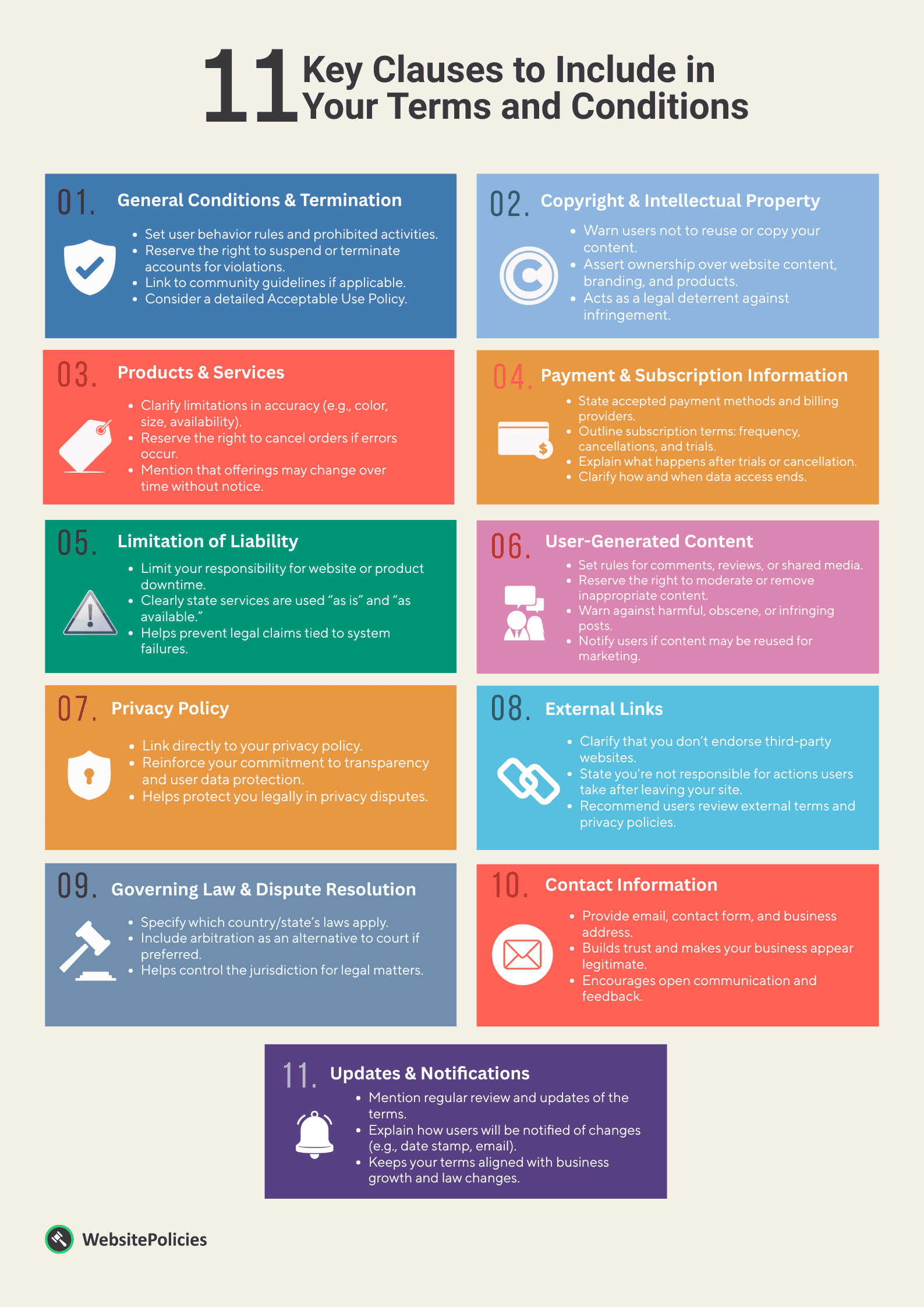
General Conditions & Termination
It is your website, therefore you can decide how it should be used. It is common to see terms and conditions which include a list of prohibitions or general guidelines to be followed by customers.
These can be broad, such as stating that your services are not to be used for illegal or unlawful purposes or that users must not try to breach or test the vulnerability of your network or circumvent security measures.
If your platform is collaborative, meaning users are invited to share such as on a social media network, you could have a separate page with community guidelines, which you could link to in that clause.
You can reserve the right to terminate the contract or disable user accounts should there be a violation of any of your terms, guidelines, and conditions by including a termination clause – this is very common in the case of websites and SaaS applications.
PRO TIP: You want to be able to take action should someone misuse your product. You may even take a step further and create a detailed acceptable use policy to go along with your terms.
Copyright & Intellectual Property
While having an intellectual property clause won’t guarantee that someone won’t copy your work, it can certainly act as a good deterrent.
It also helps to have a copyright notice that confirms and warns your users that the content on your website is yours and is not to be reproduced or re-used without your express permission.
It re-affirms that you hold trademarks and ownership over certain elements of the website itself and over the products that you sell and should be a no-brainer.
Products & Services
If you sell products online, you may wish to state that while you do your best to ensure that descriptions are accurate and colors adequately represented.
For example, you cannot be held responsible should there be discrepancies in size, shape, or color with the products received by the customer as their computers may simply have been showing them differently.
The same goes for product availability. You could state that while you aim to ensure that a product for sale is in stock, you won’t be held liable if there was a mistake and a product is sold out, in which case you reserve the right to cancel their order.
Similarly, you should recognize that errors do happen and you could, for example, give yourself the right to correct wrong information, such as prices, and to cancel or refuse to process an order that was made based on that information.
PRO TIP: Your business may evolve along the way, therefore you may wish to include a sentence stating that you may add or remove features, products, or services from time to time without any prior notice.
Payment & Subscription Information
If you sell products or services online, you may wish to specify the methods of payment that you accept, including your use of third-party payment providers if any (PayPal, Stripe, etc), and your payment terms.
Similarly, if you operate based on a subscription method, you should set out when payment will be taken and at what frequency.
Your customers should be able to refer to your terms to understand how they will be charged if they choose to cancel their subscription and when they will stop being able to access your website or services i.e. will it be immediately upon cancellation or will they have access until the end of the month.
If you offer a free trial period, you need to be clear with your users as to what happens at the end of that timeframe.
Will their credit card automatically be charged unless they cancel prior to the end date, and will it continue to be charged monthly unless they terminate their subscription? Will they still have access to what they have created during the trial period if they choose not to subscribe to your product or will their data be erased?
Writing this down in black and white can prevent bad surprises and, in the event that a customer is unhappy, you will be able to refer them to the terms and conditions that they accepted (provided of course that you diligently made sure that they were aware of them).
Limitation of Liability
The limitation of liability clause is one of the main reasons why business owners take the time to include terms and conditions on their websites. When reasonable and drafted adequately, such clauses can help protect your business against claims and lawsuits and limit the amount of money that you would have to pay in damages.
While you cannot exclude your liability for just anything and everything, you could, for example, state that you will not be held liable should your users not be able to use your website or your product.
This is important, especially if you offer a service or platform on which businesses rely in order to operate.
PRO TIP: It is common to see clauses that state that a service or website is made available on an “as is” and “as available” basis which means that a user’s decision to use the service is taken at their own risk.
User-Generated Content
If you allow your users to share comments or photos on your website or leave reviews of the products that you sell, you will want to have a section in your terms that governs their conduct and sets out what is acceptable and what isn’t.
In this clause, you could reserve the right to monitor the user-generated content shared on your website and remove anything that goes against your guidelines.
You could expressly ask your users not to post anything that contains obscene language or any material that could be considered harmful or violent or infringes on someone else’s copyright.
You could also make it clear that you reserve the right to suspend or delete the accounts of repeat infringers. This will help you make your website a safe space where people can feel comfortable sharing their opinions, which is especially important if you operate a news site, blog, or forum.
From a business point of view, you could reserve the right to use the submitted content for marketing purposes which a lot of big box stores and eCommerce retailers do in order to promote products that get rave reviews.
Let your customers know if you plan on using their content for marketing purposes, otherwise, they could be surprised to see their words or photo used in a commercial!
Privacy Policy
Including a link to your privacy policy in your terms and conditions can help protect you legally given that it’s required almost everywhere.
If there’s ever a dispute or issue related to privacy or data protection, you can point to your terms and conditions as evidence that you took appropriate steps to inform your users about your privacy practices.
By linking to your privacy policy in your terms and conditions, you’re making it clear that you take privacy seriously and that you’re committed to being transparent with your customers and protecting their data.
External Links
If you, from time to time, link to other websites (who doesn’t, right?), you may wish to include a clause that covers it.
Lets your users know that this does not imply endorsement of the third party’s website and that you are not responsible for whatever happens when your users choose to follow a link and leave your website.
They should be considering the respective terms and privacy policies of these external websites.
Governing Law & Dispute Resolution
The beauty of the Internet is that it is far-reaching and accessible to people located across the globe. On the other hand, this can create a world of issues when disputes arise and need to be settled in court.
For that reason, you may wish to elect a governing law and a dispute resolution process. If your business is located in the state of California, you may wish to specify that any dispute that arises out of these terms and conditions or use of the website will be governed by the laws of that State.
PRO TIP: You may also wish to subject all disputes to arbitration instead of going in front of the courts, in which case your users need to know so that they can make an informed decision before they start using your website or your product.
Contact Information
Any good policy should make it easy for customers to contact you. If they see that you’re easily accessible and responsive to their inquiries, they’re more likely to view your website as legitimate and trustworthy.
So let customers get in touch with you easily if they have any questions or concerns about your website or business and show them you value their input and are open to feedback. Include your email as well as a contact form.
It’s a good idea to include a business address as well as it adds credibility to your company.
Updates & Notifications
Drafting terms and conditions is not a one-time thing. You will need to review and update them regularly to make sure that you keep up with any changes in your business or products offered as well as with applicable regulations. As a bonus, it’ll help deter others from plagiarizing your terms as they’ll have to regularly revisit them.
Let your customers know how they will be made aware of these changes. You could for example mention that you will update the date at the top of your terms and conditions page in the case of minor changes. But notify your users via email or some other more-involved method should there be any significant modifications.
Where to Display Your Terms and Conditions?
Generally, you want to place terms and conditions on a standalone page and make it accessible through a hyperlink displayed in the website footer. This is good practice as it makes it easily accessible to website visitors and visible before they start navigating your website.
However, if you want to make sure that your visitors have read and accepted your terms and conditions, you should consider using a click-wrap agreement. This will allow you to retain the proof of acceptance, which could come in handy should you need to enforce those terms or should there be a dispute in the future.
How? You could have customers tick a checkbox or click an “I agree” button confirming that they acknowledge and agree to your terms during the account creation process or by using a pop-up that appears when they first land on your website.
PRO TIP: It is good practice to request affirmative consent from your customers, so avoid using any pre-ticked boxes.
If you operate an online store, you could also confirm their acceptance of your terms and conditions during the checkout process. This can help protect you from legal and financial risk, especially if your terms and conditions contain detailed pricing or product disclosures.
How Often Should You Update Your Terms and Conditions?
It’s recommended to review your terms and conditions at least once a year. If there are significant changes to your business or changes to laws that may affect your policies, you may need to update your terms and conditions more frequently.
Don’t forget to inform your customers of any changes to your terms and conditions. This can be easily done by sending out an email or notification, or by prominently displaying a notice on your website for minor changes. By keeping your customers informed of any changes, you demonstrate transparency and build trust with them.
10 Terms and Conditions Examples You Can Learn From
Below I put together some examples of terms and conditions from various industries to explain the details you should pay attention to. It will also help you get a better understanding of what works and what doesn’t.
1. Elna Cain
These pink subheadings of Elna Cain’s blog terms and conditions page definitely can catch the reader’s eye, making it easy to navigate and find relevant information. The clear structuring of the document and the effective use of summaries make it also easier to understand the legal language.

The page is concise and well-organized. It’s also great that the entire page fits on one screen, so there’s no need for endless scrolling.
2. Blogilates
Blogilates’ Body by Blogilates terms and conditions is an excellent example of how to create a visually appealing and user-friendly legal document. The use of color and graphics on the page adds interest and appeal to the document without being overwhelming or distracting.
Their organized layout, clear headings and subheadings, and simple language make it easy for everyone to understand the terms while still complying with legal requirements.
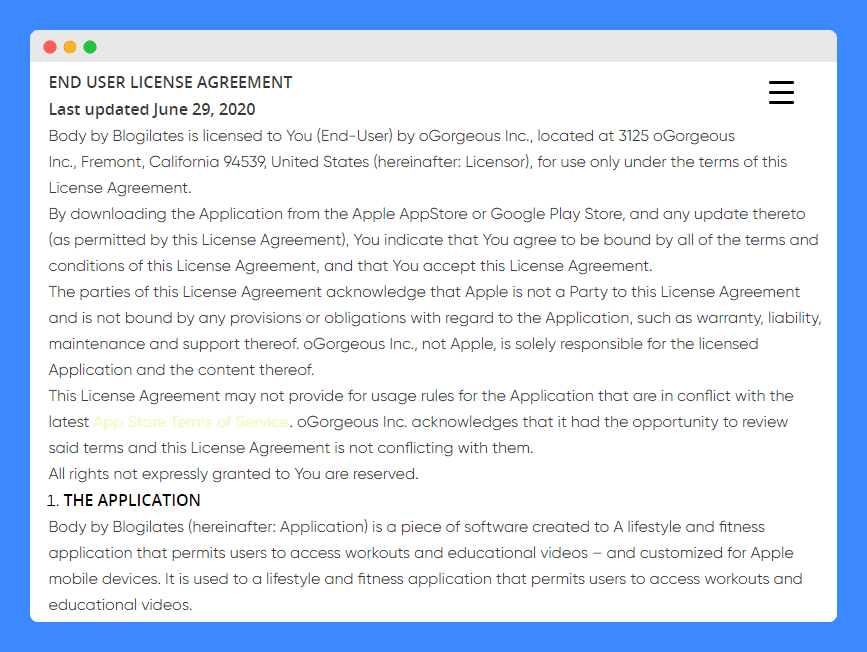
By creating a terms and conditions page that is both practical and visually appealing, Blogilates demonstrates that legal documents don’t have to be dry and boring. This approach can help to create a more positive customer experience.
3. Addicted 2 Success
This Addicted 2 Success blog terms and conditions page is all about laying out very clear and uncomplicated ground rules for using the company’s website. These terms cover things like the permitted uses of the site and the restrictions that come with it.

The use of bold and italicized text also helps to draw attention to important points.
4. Maurices
The terms of use for Maurices Incorporated govern the use of the company’s eCommerce store, including its loyalty program, text program, products, and other eCommerce-related items.
This page includes legal information and disclaimers as well as incorporates the company’s privacy policy. You can see that the table of contents provides a quick overview of the document, making it easy for consumers to find specific information.
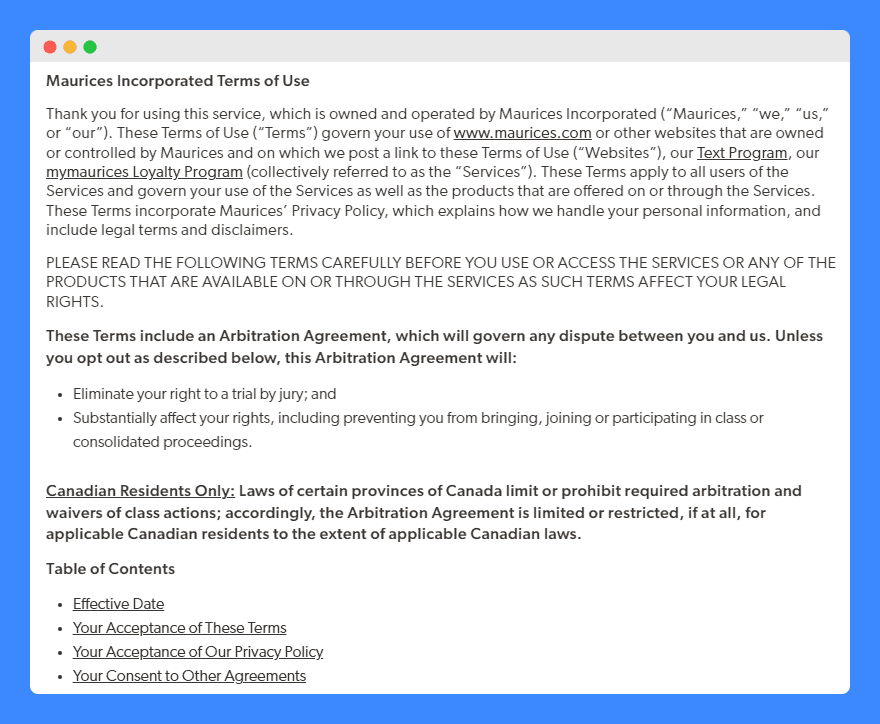
The inclusion of a summary of key points at the beginning of the document also helps to highlight important information. It is also praiseworthy for not forgetting to include the effective date at the bottom of the page.
5. Wildflower Cases
Wildflower Cases is an online store that primarily sells phone cases. Their terms and conditions page includes all the necessary information, such as disclaimers and liability limitations, while still maintaining a friendly and approachable tone.

Overall, the Wildflower Cases terms and conditions page is a great example of how an eCommerce business can present legal information in a clear and easy-to-use manner.
6. TickTick
TickTick’s terms of service are one of the most user-friendly mobile apps’ legal documents out there. The language is very clear and easy to understand, and it’s not full of legal jargon that would intimidate or confuse readers.
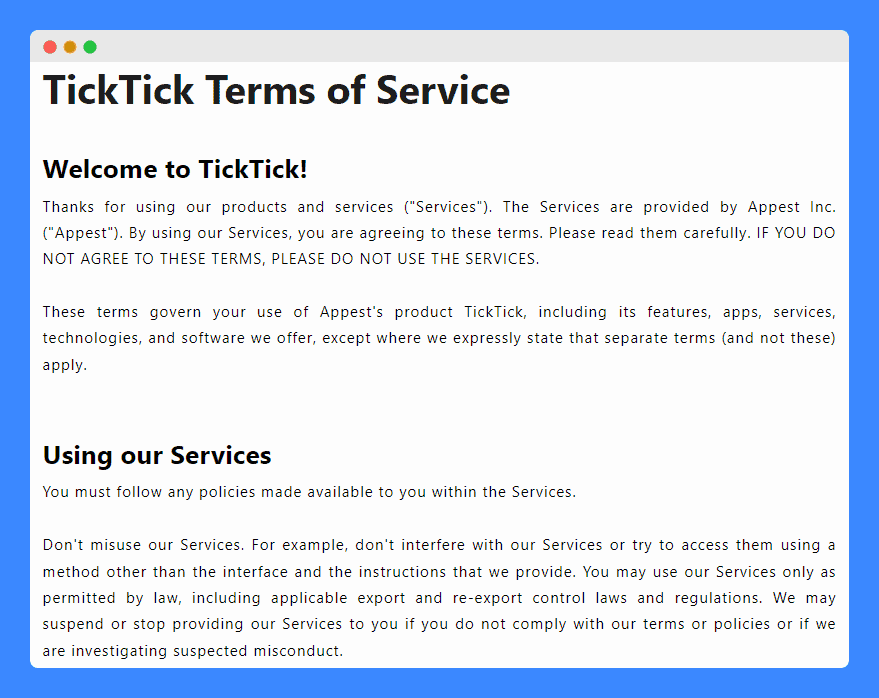
It’s written in plain English that is readable to everyone, which is a huge plus for a business. This example is definitely worth analyzing.
7. LastPass
LastPass’ terms and conditions page is divided into two tabs, one for Business Use and the other for Personal Use, which is helpful for customers to quickly navigate to the section that applies to them.

Additionally, at the beginning of the page, they provide a good explanation of which terms apply to which customer, including a link for those who have purchased LastPass through an authorized partner.
8. Lemlist
You may know Lemlist as a SaaS that provides email outreach automation, and you will also be happy to conclude that their terms and conditions are very good quality and are accessible to consumers of all levels.
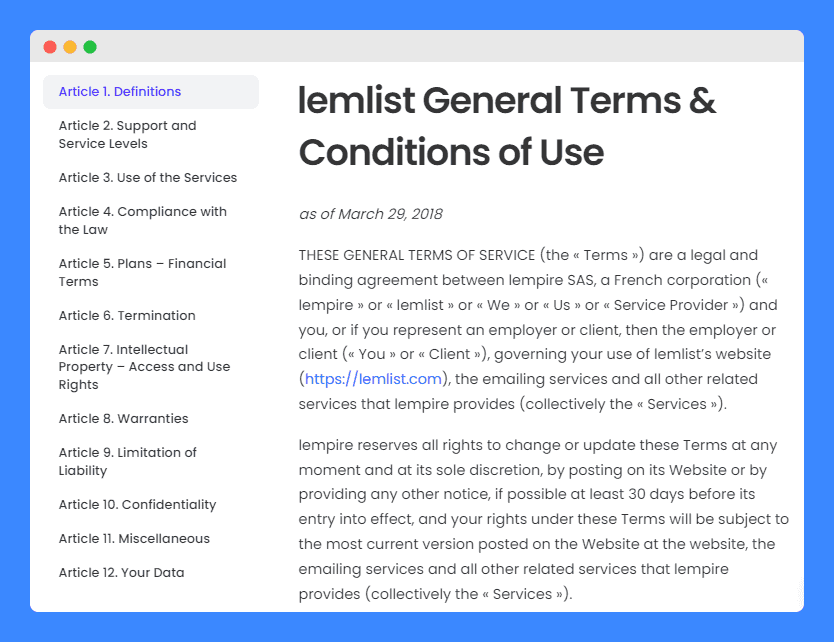
One of the best things about Lemlist’s terms and conditions is how easily navigable they are, ensuring that both the company and its customers understand their responsibilities. The page is also well-designed, and everyone can easily find the information they need.
9. Sunsama
SunSama is a SaaS platform that helps individuals and teams manage their daily schedules and tasks effectively. You will find that the layout of the terms and conditions is very simple, with headings and subheadings that make it easy to find specific information. However, you may conclude that the page’s navigation could be improved.

On the plus side, it includes a waiver section that notes Summay’s right to enforce provisions, and a relationship section clarifying that Sunsama and its customers are considered independent contractors. Despite the navigation issues, the terms and conditions contain valuable information for customers and present legal concepts in a clear and accessible way.
10. SkinStore
You may see that SkinStore’s terms and conditions page is divided into different sections covering different aspects of the agreement, including orders, price, payment, delivery, returns, and more. The sections are easily identifiable, and the language used is easy to understand.
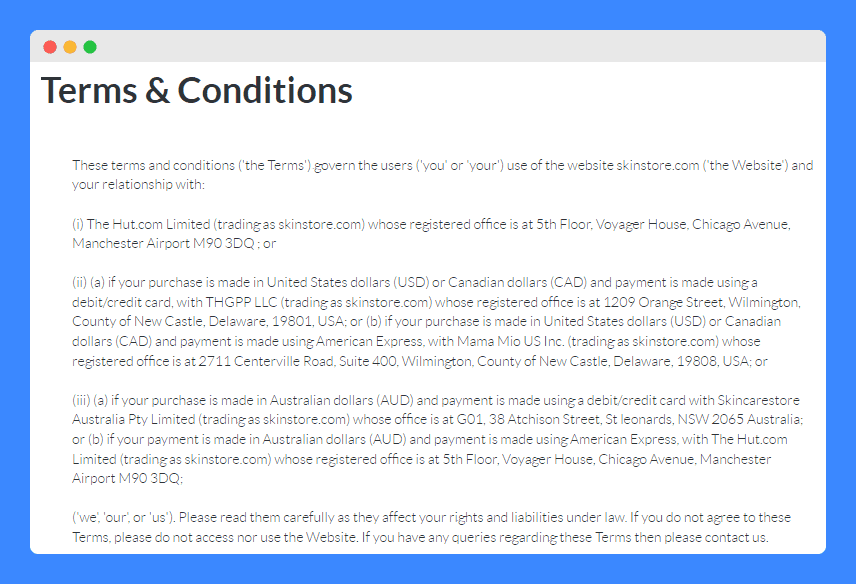
Frequently Asked Questions
Why is it important to have the terms and conditions on my website?
If something goes wrong and someone sues you, having terms and conditions in place can help limit your liability. It can also help deter people from misusing your website by making them aware of the consequences of doing so.
Are the terms and conditions legally binding?
Yes, the terms and conditions are legally binding. By agreeing to the terms and conditions, your customers agree to the terms and the rules set by you when using your products and services.
Can I copy someone else’s terms and conditions?
You should never copy someone else’s terms and conditions as it may be considered copyright infringement and every business is unique and thus should have its own set of rules.
Do I need a lawyer to write my terms and conditions?
No, you don’t need a lawyer to write terms and conditions for your website but you may certainly have them review your policy for peace of mind. It’ll also come out much cheaper than hiring one to draft it from scratch.
Can I use a generic terms and conditions template?
You may use one as a starting point as long as you personalize it sufficiently and add the elements important to your business to cover all the angles. It’s best not to go this route though unless you understand the laws and legal jargon.
Can I write the terms and conditions myself?
Yes, you can write terms and conditions yourself if you don’t mind spending time on research. It’s much easier and faster to use an online generator though to save time and avoid common mistakes.
